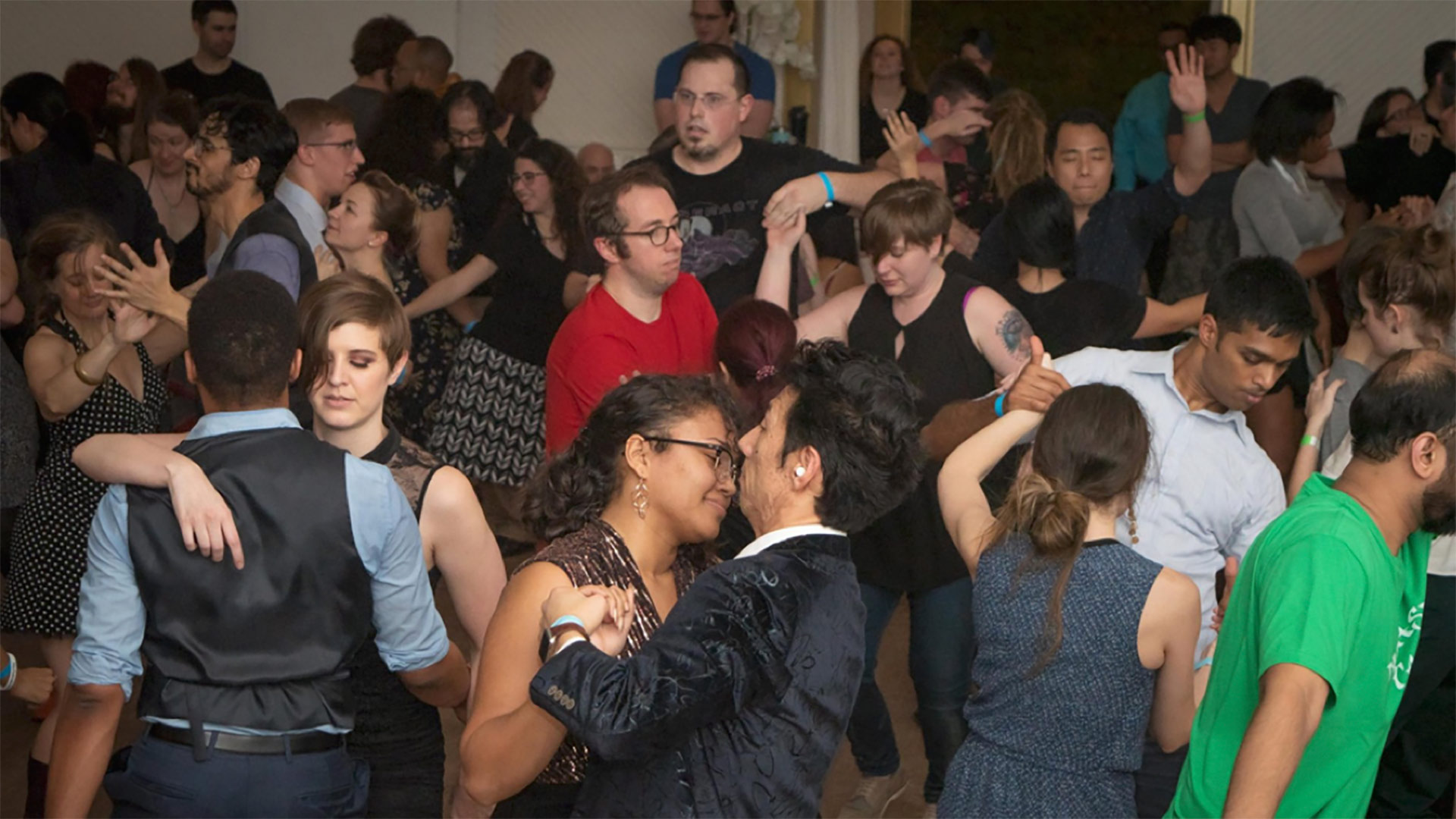
Blues Dancing Exhibit and Oral History Project
- Post Date: 9/3/2019
- Author: Jennifer White, registrar
- Reading Time: 2 minute read
Most people are familiar with blues music—you might know names like Etta James, B.B. King, or Buddy Guy—but what is less known is that there is also a tradition of dancing to blues music that evolved along with the music and is now referred to as “blues dancing.”
“Blues dancing” draws on African American social dance done by ordinary people in homes, apartments, bars, clubs, churches and ballrooms since the late 1800’s. It includes a family of dance idioms that share a common aesthetic, but developed differently from region to region and over time.
Blues dancing has been done in non-black spaces since approximately the 1990s. While some cities have regular local social dances, many dancers travel regularly to attend weekend dance festivals in various cities throughout the U.S. and abroad. Dancers draw inspiration from earlier blues dance idioms.
Share Your Experience!
If you danced at home, at house parties, among friends and families, at family reunions, in church, on the street corner, at a bar or night club or in other informal settings in African American spaces in the 20th century, we are interested in hearing from you! And we hope you will decide to participate in our oral history project that will be part of an exhibit on African American Vernacular Dance Heritage and Contemporary Blues Dancing to be held Spring 2020 at Spurlock. You do not need to be a professional dancer, nor do you need to have any specific training, performance experience, or expertise in dance.Interested in participating? Please contact our Registrar, Jennifer White, at (217) 244-3353 or jenwhite@illinois.edu (email link).
-
- Share:
- Subscribe to Newletter
- Giving
